Frequently Asked Questions 2.0 – The FodderPro Feed System (part 2)
 As promised, we’re back with our second edition of the Frequently Asked Fodder Questions blog. If you haven’t gotten the chance to look over part one yet, you can find it here, and read it at your convenience. Part one of our two part FAQ blog was intended to give an overview of the FodderPro Feed System by answering some of the more general questions we are asked every day. Part two of our blog series is intended to answer your more technical questions, in hopes that all your fears of fodder will have vanished after you’ve finished reading. So without further ado, we present you with the final installment of our Frequently Asked Fodder Questions blog.
As promised, we’re back with our second edition of the Frequently Asked Fodder Questions blog. If you haven’t gotten the chance to look over part one yet, you can find it here, and read it at your convenience. Part one of our two part FAQ blog was intended to give an overview of the FodderPro Feed System by answering some of the more general questions we are asked every day. Part two of our blog series is intended to answer your more technical questions, in hopes that all your fears of fodder will have vanished after you’ve finished reading. So without further ado, we present you with the final installment of our Frequently Asked Fodder Questions blog.
Hydroponic Fodder
1. Is fodder organic?
We have confirmed with the USDA that fodder can be organic if organic seed is used and if it is grown following the organic standards set by the National Organic Program. The use of fodder must also be registered with the certifying agent for your operation. For more information on organic certification and the National Organic Program, view the information provided by the Agricultural Marketing Service on the USDA’s website.
2. What are the protein levels of the grasses used for fodder?
Different grasses contain different levels of protein. When reviewing protein levels, keep in mind the increased digestibility of hydroponic fodder compared to dry feeds. You can download forage reports on their respective feed pages or contact us and we will send them to you.
3. Can you mix feed types, say barley and alfalfa, in the same tray?
Absolutely. Blends of seed can provide additional benefits to your animals because you are taking advantage of the nutritional qualities of both feeds. Please note that initially you will notice slightly different germination rates between the two types of seed, but at the end of seven days you will have full development from both.
FodderPro Feed Systems
1. What are the channels made of?
Our channels are made out of recycled window vinyl. They are fully UV protected and have an NSF (National Sanitation Foundation) approved coating. They are rated for human consumption and will not emit gasses or any noxious chemicals. These channels are manufactured in the United States and carry a 20-year warranty.
2. Is the water in the trays recycled?
No, the FodderPro Feed System does not recycle water. Each system uses a maximum of 4 gallons of water per 12’ long channel per day. To put it in perspective, a ten-minute shower uses about 50 to 60 gallons of water, so these systems are quite efficient. The water that is drained from the system is commonly used to water animals as it has a great nutrient value. Download our fodder water report for more information.
3. How important is sanitation?
Sanitation is very important. Because we are producing feed for animals, mold or mycotoxins should not be allowed to grow on the fodder. Sanitization of the seed and system between each harvest will help ensure that you are producing healthy forage.
4. Are the sprouts watered from the top or the bottom?
The FodderPro Feed System utilizes NFT 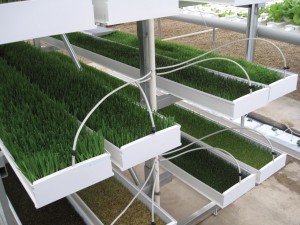 (nutrient film technique) hydroponics. The water comes in from a 3/4″ PVC manifold above each channel via a 1/4″ tube with micro valve. It then spreads through the root mat as it flows down the slightly concave channels. This is the most efficient method of watering. In overhead misting, you are blanketing the sprouts and hoping that the water reaches the root mats. In NFT, you provide the water directly to the root mat. The only wastewater is water that was not absorbed by the roots.
(nutrient film technique) hydroponics. The water comes in from a 3/4″ PVC manifold above each channel via a 1/4″ tube with micro valve. It then spreads through the root mat as it flows down the slightly concave channels. This is the most efficient method of watering. In overhead misting, you are blanketing the sprouts and hoping that the water reaches the root mats. In NFT, you provide the water directly to the root mat. The only wastewater is water that was not absorbed by the roots.
5. How do you mix up the solution to clean the trays after harvesting?
The channels must be sanitized between harvests with a mild sanitization solution. We have found that a 10 to 1 water to bleach solution is the most effective sanitizer. Once the system is sanitized, it should be rinsed with clean water and reseeded.
6. How much water pressure do you need in the FodderPro Feed System?
The FodderPro Feed System can be connected to any live water line and you are ready to grow! For best results, we recommend no more than 22 PSI.
7. How warm does the room with the FodderPro Feed System need to be?
Between 60°F and 75°F with 40% to 80% relative humidity is the ideal environment for fodder production.
Water Usage
1. What volume of water should run through the system when it’s on?
You can adjust the volume of water running through the system at any time. Determining if you are getting the correct amount of water requires some trial and error. The amount of water required by the seeds is based on the microclimate in which they are grown. Monitor your system closely for the first few weeks and make minor adjustments. You never want the flow of water to be so strong that your seeds are washing to the end of the channel, but you also don’t want the flow so gentle that the seeds at the end of the channel are dry. You want consistent dampening of the seed throughout the entire 12′ length and you do want a little water to drain away.
2. Is there any advantage to adding nutrients to the water?
Adding nutrients to the water is not necessary. Each seed has a “battery pack” of nutrients that will support its growth during the 7-day cycle. We ran trials with nutrients in the water and found that they provided a slight benefit to the fodder, but after running the calculations, we can’t justify the additional investment.
3. Can I use well water or should I use public water that is treated?
You can use either. If you are using well water, we recommend testing the pH and a running it through a small filter.
4. What is the minimum temperature for the water?
We recommend that the water temperature to be above 50°F. The water should be as close to the ambient temperature of the fodder growing room as possible for best results. We have run trials with the water at lower temperatures and the germination rate was slightly decreased.
Lighting Requirements
1. How many hours of light are needed per day?
It is recommended that you provide at least 6 hours of light per day. That is enough to stimulate photosynthesis and produce a fodder mat that is thick and lush.
2. Can the lights be kept on all day and night or will the sprouts get spindly?
Lights can be left on 24/7, but it is not required. Sprouts should not get spindly. We found that spindly fodder was produced when there was no light at all. We did a trial with no light and the fodder was very sparse and extremely yellow. Our tests showed that more light equals better fodder.
3. How should I set up my lighting?
The lighting should be directed towards all of the tiers. The lighting needs to be distributed evenly for best results. The layout of the building you are growing in and what the building is actually made of are key considerations when setting up your lighting.
Benefits to Livestock and Horses
1. How much fodder is needed per day for a producing dairy cow and how much more protein is in fodder percentage-wise?
A producing dairy cow will need about 2% of their live body weight of fodder per day with 1% roughage. Fodder is meant to be a supplement and cannot replace all hay. When it comes to the percentage of increase in protein, it depends on the type of fodder and the type of feed we are relating it to.
2. Will an older horse with bad teeth or almost no teeth be able to eat this?
Fodder is not terribly hard to chew. It should be fine, but if you notice them struggling, cut the fodder into smaller sections.
3. Can I certify the pork and/or beef as organic if I only feed fodder?
Organic certification and regulations come from the federal government and are under the jurisdiction of the National Organic Program. From a feeding standpoint, as long as the seed is organic the animals can be certified organic as well. For more information on organics and the National Organic Program, view the information provided by the Agricultural Marketing Service on the USDA’s website.
4. Would you be able to recommend the type of fodder to use depending on the animal?
The type of fodder you grow largely depends on the type of animal, what you have available, where you’re located, what the animal’s purpose is in life, their size and what they’re currently being fed. If you’re looking to start a conversation regarding this, contact us so we can further help you decide.
Fodder Seed
1. How much seed does it take to fill one of the channels in the FodderPro Feed System?
You will need between 7 and 9 lbs. of dry seed per 12′ channel. Your precise amount will depend on your microclimate and the type of seed.
2. Can we use seeds that have been chemically treated to prevent fungus or mold?
We don’t recommend it. Using treated seed is not an approved method for livestock feeding. Feeding sprouts grown with treated seed over an extended period will actually make the animal, particularly horses, quite sick. We recommend that you purchase the highest quality, cleanest and least processed seed possible to give you the best results.
3. What if I can’t get barley in my area?
While barley is one of the most popular seeds used in fodder, it can be hard to get in some places in the country. Wheat or triticale is normally used as a suitable alternative, but many different seeds are suitable. If you are unsure about a particular seed, or need suggestions on which seed to use, feel free to contact us and we can assist you in choosing the seed that is right for your needs.
If you would like further information or have questions we have not answered, you can visit our fodder website www.foddersystems.com, check out our first ever FAQ Fodder Blog here, or feel free to give one of our fodder specialists a call at 1-800-201-3414.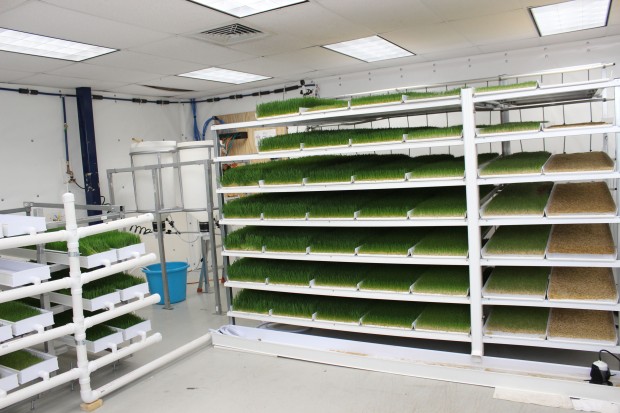


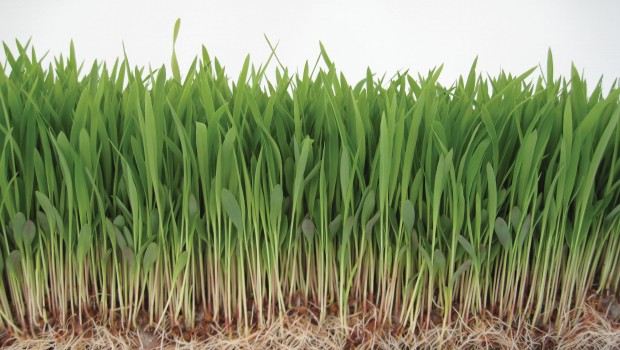
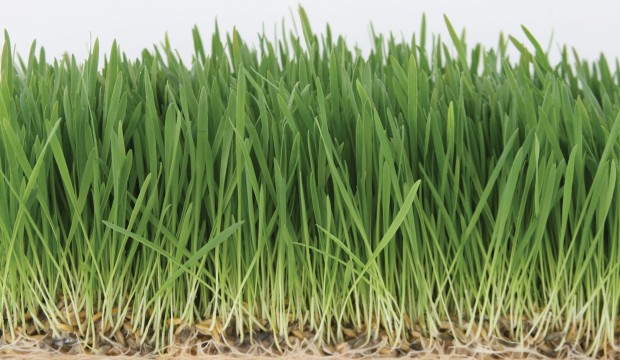

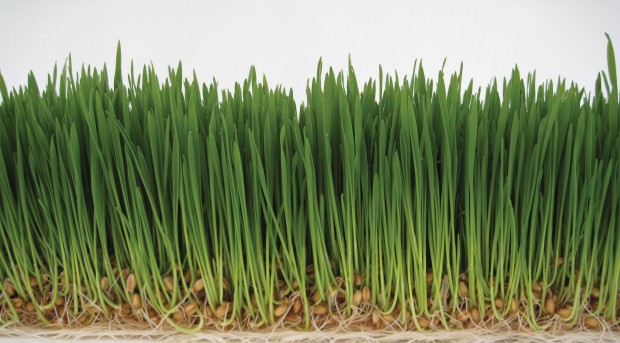
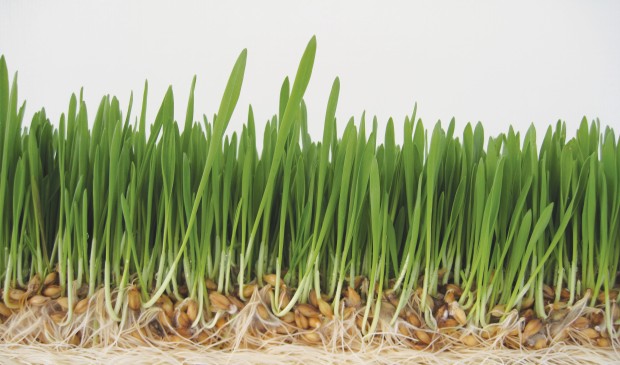



I need to know the formula of nutrient solution. Please assist.
Hi Peter,
Nutrients are not required to grow fodder. The seed has all of the energy and nutrients the sprouts need for the first 7 days. Please let us know if you need anymore information about our FodderPro Feed Systems or hydroponic fodder.
Thanks,
Your Friends at FarmTek
How many lbs of barley fodder is avg harvest in a 12′ tray. Using both the 7 and 9 lb seeding rate?
Hi Josh,
You can expect roughly 60 lbs. of Fodder at harvest when working with a 12′ tray.
Thanks
how many kgs fodder we get? for 1kg of maize seeds in 2ft X 1.5ft tray?